

april 2023 | redemptive suffering MAGAZINE bringing faith into the home 192nd year | issue 4
“The client advisor we worked with was patient and answered all my questions. They are there for me to this day.”
Do you have questions about Medicare?
We have answers.
Our local advisors simplify Medicare by providing personalized counseling, evaluating plan options, and helping you enroll in the right plan for your needs and budget.
Whether you’re already on Medicare or not, we can help. Plus, our services and lifelong client support are always provided at no cost to you.
Call 866.625.4609 or visit retiremed.com/tct
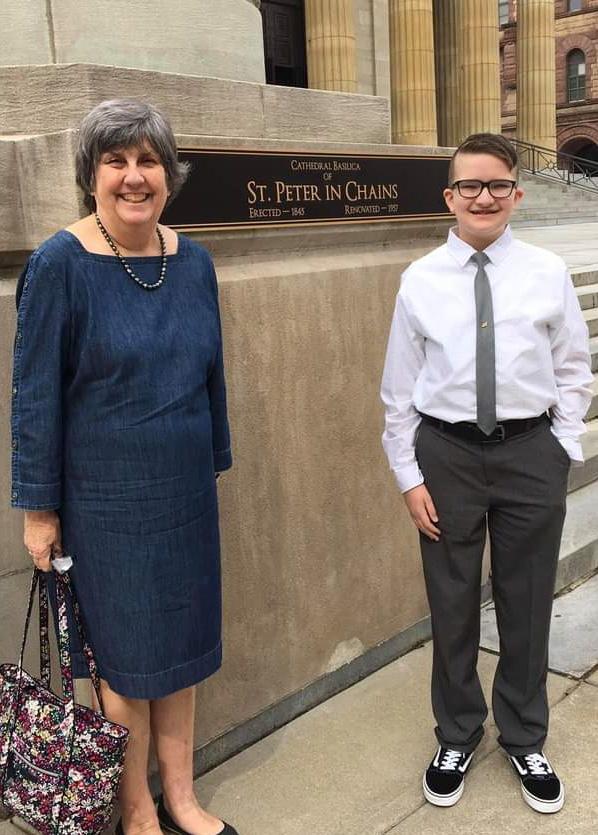
2 |
“When I retired, choosing a Medicare plan seemed daunting, but RetireMed made it very easy.”
RetireMed client Mary Gutman, parishioner at St. Francis of Assisi in Centerville, with her grandson Matthew Harrison on his confirmation day.
Where is the Redemption?
Suffering looks different for everyone. For some it’s going to a job every day that they hate, for others it’s battling mental illness and for many it’s a physical injury or illness. Regardless of where you fall on the spectrum of suffering, it’s a topic we can all, unfortunately, relate to.
As we prepare this issue of the magazine, we are in Lent, a time in which we reflect on Christ’s suffering: suffering through Satan’s temptations; suffering through the doubt and betrayal of His apostles; and ultimately, physically suffering the agony on the cross.
It’s also a time when my family is carrying our own difficult cross. Readers may have seen my previous articles about our son, Luke, who has run the gamut from mystery illness, to tentative diagnosis, to treatment. Over the past year we experienced a redemption as we began to get the disease under control. He’s been able to play with peers in neartypical ways. It’s given rise to hope, to joy.
So, you can imagine the crushing disappointment when we learned recently that, despite treatment, Luke’s illness is spreading. As he experiences the physical suffering of juvenile arthritis at age seven, we, as his parents, suffer mentally, emotionally and spiritually as we try to figure out the path ahead. Yes, Luke has an amazing medical team at one of the best Children’s hospitals in the country. Yes, we have supportive friends and family, but at the end of the day, the parent never wants to see their child suffer.
I was deep in this tunnel of thoughts, grappling with faith and why children get sick, when one of my favorite priests walked into my office. Although I suspect he was stopping by for a work-related need, when he asked how my son was doing, he found himself with a very emotional mother on his hands. Without missing a beat, Father said, “Tell God you’re
mad. He wants to know. He wants you to talk to Him. God doesn’t want you to suffer. He doesn’t want your son to hurt. He wants to be there with you in this.”
It was like turning on a light in a dark room. God doesn’t want me to suffer? I knew that objectively. God didn’t want Jesus to suffer. But God doesn’t want me to suffer. He doesn’t want my son to suffer. So where is the redemption in all of this?
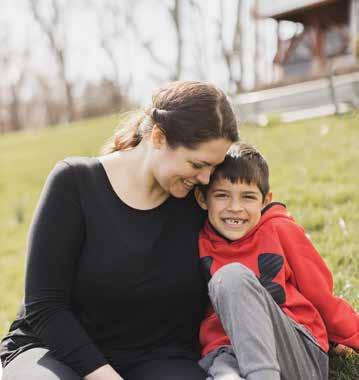
As I reflect on the journey we have been on this past year, it’s easier to find the bright spots. Luke is himself a bright light— his name literally translates to “light.” When we walk into Children’s Hospital, we’re often greeted by, “Oh, our favorite patient!” He eagerly asked us to pray through the intercession of his personal patron, St. Luke, the patron of physicians. And I am more courageous in asking for prayer, even with my circles of friends who aren’t particularly religious.

Suffering is difficult, as are many things in the earthly world, but God can still help us find the light, even in the darkest of times. As we approach Easter, let us remember Christ’s suffering and unite our own pain to His. And together, through prayer, may we seek the joy of the resurrection.
Swensen

| 3
EDITOR’S NOTE T HE CATHOLIC TELEGRAPH 192nd Year No. 4 • April 2023 513-263-6635 • thecatholictelegraph.com 100 East Eighth St., Cincinnati, OH 45202 ctadvertising@catholicaoc.org The Catholic Telegraph (xUSPS 094-520) ISSN. 10736689 is published monthly by the Archdiocese of Cincinnati 100 E 8th St., Cincinnati, OH 45202. Periodicals postage paid at Cincinnati and at additional mailing office. POSTMASTER: Send address changes to: The Catholic Telegraph, 100 E. 8th St., Cincinnati, OH 45202
EDITORIAL DIRECTOR Jessica
GRAPHIC DESIGN Emma
MEDIA SALES Deacon
DIGITAL ENGAGEMENT Dominick Albano PHOTOGRAPHY Margaret
NEW MEDIA EDITOR Greg
cteditorial@catholicaoc.org
PUBLISHER Archbishop Dennis M. Schnurr
Rinaudo
Cassani
Graham Galloway
Hartman
Food for All page 16
Joy in the World to Come
page 14
redemptive suffering columns
14 JOY IN THE WORLD TO COME
KARY ELLEN BERGER Gate of Heaven
16 FOOD FOR ALL PATRICIA MCGEEVER
Catholic Charities of Southwest Ohio’s drive-thru food pantry program helps fill gaps across six counties

18 OFFERING UP OUR DAYS
DAVID & KRISTY KISSELL
A reflection on living with Epidermolysis bullosa
24 FAITH & MENTAL HEALTH
7 QUESTION OF FAITH
FATHER DAVID ENDRES
Accepting our sacrifice?
10 A CLOSER LOOK
DR. KENNETH CRAYCRAFT
The secret of life is suffering
12 SHINE ON DOMINICK ALBANO
The power of suffering
21 SEIZE THE MOMENT NICHOLAS HARDESTY
Mary: A model of joy in suffering
32 BOOK REVIEW
REVIEWED BY ANGELA FRANKS With All Her Mind
8 EUCHARISTIC REVIVAL DEACON MARK DANIS
The Person of Jesus made present
30 BOOK PRESERVES STORIES OF OHIO’S WWII GENERATION
JOHN STEGEMAN
40 OUT & ABOUT IN THE ARCHDIOCESE
DR. EMILY DOWDELL
A safe passage through the suffering of mental health
26 THE FINAL MISSION
MATT HESS
How a Carthagena community accompanies aging priests & brothers

28 THREE PARTS TO EVERY STORY
RACHEL WEIDNER
33 DID YOU KNOW?
Holy Name. Mt. Auburn
36 THEOLOGY OF THE BODY
DR. ANDREW SODERGREN Original Shame, part 3
38 KIDS’ CORNER
St. Benedict Joseph Labre
42 THE FINAL WORD
TONI MCFADDEN
He rescued me from sin ON THE COVER

Kolbe Kissell, who suffers from Epidermolysis bullosa, at St. John the Baptist Church, Harrison.
POPE FRANCIS’ PRAYER INTENTION FOR APRIL
For a culture of peace and non-violence
We pray for the spread of peace and non-violence, by decreasing the use of weapons by States and citizens.
4 | THE CATHOLIC TELEGRAPH
news
PHOTO BY: MARGARET SWENSEN
contents
april
Seek the Lord
ARCHBISHOP DENNI S M. SCHNURR
We begin April with the liturgical commemoration of the Lord’s Passion, Death and Resurrection. There are cries of “Hosanna,” preparations for the Passover Feast, plots of betrayal, moments of intimacy, fear and loneliness. Only after passing through the darkness of Good Friday and the silence of Holy Saturday do we experience the light of the Resurrection as it overcomes the darkness at the beginning of the Great Easter Vigil. We are witnesses to the Lord’s triumph over sin and death, but we also see the havoc of suffering and the pain which He endured as consequences of sin.
Pope St. John Paul II clearly stated that our “redemption was accomplished through the Cross of Christ, that is, through His suffering” (Salvifici doloris, 3). He goes on to say that through our union with Christ in baptism, we, as the members of Christ’s Church, are given a share in His work of redemption. The Holy Father said this happens in a particular way when suffering enters our life. “This happens, as we know, at different moments in life, it takes place in different ways, it assumes different dimensions; nevertheless, in whatever form, suffering seems to be, and is, almost inseparable from man’s earthly existence” (SD, 3).
Each of us at one time or another, and to varying degrees, is subject to suffering in this world which is wounded by sin. This is not the world as God intended it to be from the beginning. Through the Paschal Mystery of Christ and by the outpouring of the Holy Spirit, God has redeemed the world, but its restoration in Christ is not yet perfectly complete. Sin is still being purged until the Kingdom of God is fully established. In the meantime, each of us, baptized into the suffering and death of Christ, is called to share in
the mystery of Christ’s redemptive suffering. We suffer as we root out sin from our own lives, and we suffer because sin exists in the world around us. Suffering is, as Pope John Paul II said, inevitable in this world.

But how are we to respond to suffering? Many turn away from God when they experience suffering, thinking that any God who is truly good would not permit us to experience such things. Yet only God is capable of bringing good out of the most challenging and painful moments in our lives. In the Resurrection of Christ, God triumphs over sin and even death. These do not have the last word and are not definitive. Reflecting on this, St. Paul exclaimed, “Death is swallowed up in victory. Where, O death, is your victory? Where, O death, is your sting?” (1 Cor. 15:54-55).
This mystery is precisely what we celebrate at Easter: Christ has overcome sin, suffering and death. Because of the Resurrection, we can have hope in something greater than life’s limitations in this broken world. Although we do not cease to experience limitations and suffering, they are not without meaning. Suffering, through the Cross of Christ, has become a means by which we share in Christ’s redemptive work. Through His greatest act of love, Jesus accompanies us when we suffer and invites us to join Him in offering them for the benefit of all. Therefore, our moments of suffering are not empty and void; rather, they are an avenue by which God’s grace flows upon a world in need.
As he endured various trials, St. Paul reflected on suffering united to Christ’s and declared, “It is Christ in you, the hope for glory” (Col. 1:27). We Christians have an opportunity, even in our suffering, to be ambassadors of hope!
| 5
SEEK THE LORD / APRIL 2023
Archbishop Dennis Schnurr serves the inmates at Dayton Correctional Institute.
Busca al Senor
Comenzamos abril con la conmemoración litúrgica de la Pasión, Muerte y Resurrección del Señor. Hay gritos de “Hosanna”, preparativos para la fiesta de Pascua, complots de traición, momentos de intimidad, miedo y soledad. Sólo después de atravesar la oscuridad del Viernes Santo y el silencio del Sábado Santo, experimentamos la luz de la Resurrección, que vence a las tinieblas al comienzo de la Gran Vigilia Pascual. Somos testigos del triunfo del Señor sobre el pecado y la muerte, pero también vemos los estragos del sufrimiento y el dolor que soportó como consecuencia del pecado.
El Papa San Juan Pablo II afirmó claramente que nuestra “redención se ha realizado mediante la cruz de Cristo, o sea mediante su sufrimiento” (Salvifici doloris, 3). Continúa diciendo que, a través de nuestra unión con Cristo en el bautismo, nosotros, como miembros de la Iglesia de Cristo, somos partícipes de su obra redentora. El Santo Padre dijo que esto sucede de un modo particular cuando el sufrimiento entra en nuestra vida. “Esto sucede, como es sabido, en diversos momentos de la vida; se realiza de maneras diferentes; asume dimensiones diversas; sin embargo, de una forma o de otra, el sufrimiento parece ser, y lo es, casi inseparable de la existencia terrena del hombre” (SD, 3).
Cada uno de nosotros, en un momento u otro y en diversos grados, está sujeto al sufrimiento en este mundo herido por el pecado. Éste no es el mundo tal como Dios lo quiso desde el principio. Por el Misterio Pascual de Cristo y por la efusión del Espíritu Santo, Dios ha redimido al mundo, pero su restauración en Cristo no es todavía perfectamente completa. El pecado sigue siendo purgado hasta que el Reino de Dios esté plenamente establecido. Mientras tanto, cada uno de nosotros, bautizado en el sufrimiento y la muerte de Cristo, está llamado a compartir el misterio del sufrimiento redentor de Cristo. Sufrimos
cuando desarraigamos el pecado de nuestras propias vidas, y sufrimos porque el pecado existe en el mundo que nos rodea. El sufrimiento es, como dijo el Papa Juan Pablo II, inevitable en este mundo.
Pero ¿cómo debemos responder al sufrimiento? Muchos se alejan de Dios cuando experimentan el sufrimiento, pensando que un Dios que sea verdaderamente bueno no permitiría que experimentáramos tales cosas. Sin embargo, sólo Dios es capaz de sacar algo bueno de los momentos más difíciles y dolorosos de nuestras vidas. En la Resurrección de Cristo, Dios triunfa sobre el pecado e incluso sobre la muerte. Éstos no tienen la última palabra ni son definitivos. Reflexionando sobre esto, San Pablo exclamó: “La muerte ha sido vencida. ¿Dónde está, muerte, tu victoria? ¿Dónde está tu aguijón?” (1 Cor. 15:54-55).
Este misterio es precisamente lo que celebramos en la Pascua: Cristo ha vencido al pecado, al sufrimiento y a la muerte. Gracias a la Resurrección, podemos tener esperanza en algo más grande que las limitaciones de la vida en este mundo fracturado. Aunque no dejemos de experimentar limitaciones y sufrimientos, éstos no carecen de sentido. El sufrimiento, a través de la Cruz de Cristo, se ha convertido en un medio por el cual compartimos la obra redentora de Cristo. Mediante su mayor acto de amor, Jesús nos acompaña cuando sufrimos y nos invita a unirnos a Él para ofrecerlos en beneficio de todos. Por tanto, nuestros momentos de sufrimiento no son vacíos y sin sentido, sino una vía por la que la gracia de Dios fluye sobre un mundo necesitado.
Mientras soportaba diversas pruebas, San Pablo reflexionaba sobre el sufrimiento unido al de Cristo y declaraba: “es Cristo entre ustedes, la esperanza de la gloria” (Col. 1:27).
¡Los cristianos tenemos la oportunidad, incluso en nuestro sufrimiento, de ser embajadores de la esperanza!
6 |
ARZOBISPO DENNIS M. SCHNURR
THE CATHOLIC TELEGRAPH
Accepting Our Sacrifice?
During the Mass, the people say, “May the Lord accept the sacrifice at your hands for the praise and glory of His name, for our good and the good of all His holy Church.” What does this mean? Why wouldn’t God accept our sacrifice?
The prayers of the Mass are essentially a dialogue—sometimes between the priest and God, and other times between the priest and people. As the priest begins the Eucharistic Prayer, part of that dialogue is a request for God to accept the sacrifice of the Mass, which is made by the people at the priest’s invitation. To understand this request, we need to consider the structures of the prayers and their role in the Mass.
TO GOD THE FATHER
At the Mass, the priest presides and acts in the person of Christ. Thus, the prayers are principally directed to God the Father, by which the priest represents Christ’s sacrifice to the Father.

This is seen in the opening prayer (called the “collect”) of the Mass. The ancient tradition of the Church addresses the prayer to God the Father, through Christ, and in the Holy Spirit, maintaining the Trinitarian dimension of prayer (“O God… Through our Lord Jesus Christ, your Son, who lives and reigns with you in the unity of the Holy Spirit, God, forever and ever…”).
PRIEST AND PEOPLE
That the priest acts in the person of Christ does not indicate that the priest is totally separate from the worshiping congregation. As Vatican II reminded us, “The prayers addressed to God by the priest who presides over the assembly in the person of Christ are said in the name of the entire holy people and of all present” (Sacrosanctum Concilium, sec. 33). During the dialogue that begins the Eucharistic Prayer, the priest associates the people with himself in addressing God in
the name of the entire community.
ACCEPTING THE SACRIFICE
This occurs in Mass when the gifts have been placed on the altar, and the priest, as head of the congregation and in its name, offers them back to God. The priest says to the people, “Pray, brothers and sisters, that my sacrifice and yours may be acceptable to God, the almighty Father.” The people respond, “May the Lord accept the sacrifice at your hands….”
The people’s response relates closely to what comes next: the priest asks God to send down His Holy Spirit to hallow the gifts. At the start of the Roman Canon (Eucharistic Prayer I), for instance, the priest begins, “To you, therefore, most merciful Father…,” making his own plea to God to accept and bless the offerings so that they may become Jesus’ Body and Blood.
GOD’S FREEDOM AND LOVE
This prayer dialogue is a reminder that God is the primary actor in the Mass, not the people or the priest. None of us, whether priests or people, should be presumptuous; we cannot command God. At the same time, God does what He promised—to be with us for all ages—but from His freedom, not our command.
At the Mass, the people are supplicants. They come before God pleading for grace, mercy and strength. He is free to give His gifts as He pleases. We trust that God, out of love, always bestows His gifts on those who ask for them in faith. When we ask God to accept the sacrifice at our hands, we trust that He will.
FATHER DAVID ENDRES is professor of Church history and historical theology at Mount St. Mary’s Seminary & School of Theology.

| 7
QUESTION OF FAITH / APRIL 2023
Eucharistic Fact!
According to the Catechism, the Eucharist “preserves, increases, and renews the life of grace received at Baptism” (CCC 1392). This means when we receive the Eucharist, it increases the life of grace already present within us.

The Person of Jesus Made Present
BY DEACON MARK DANIS
Deacon Mark Danis ministers as deacon in the NE-3 Family of Parishes. He is the Director of Spirituality for the St. Vincent de Paul Society in Dayton, where he is responsible for spiritual programs and ministry for homeless shelters, permanent supportive housing and the Vincentian Conferences. He is also a member of the Order of Discalced Carmelites Secular.
But they urged him strongly, saying, “Stay with us, because it is almost evening, and the day is now nearly over.” So he went in to stay with them (Lk. 24:29).
The two disciples’ request for Jesus to remain with them when they arrived at Emmaus was the theme of Pope St. John Paul II’s 2004 Apostolic Letter, Mane Nobiscum Domine, “Stay With Us Lord.” Expressing the Holy Father’s desire that the faithful deepen their encounter with Christ in the Eucharist, it was the foundational document for The Year of the Eucharist, October 2004 to October 2005.
Now, the Church’s three year National Eucharistic Revival offers the faithful of today the opportunity to reflect upon and deepen our personal relationship with Jesus Christ in the Eucharist. Such a relationship can only emerge from a genuine desire for an intimate encounter with a Person, the One who is Love (1 Jn. 4:8). As with every relationship, desire for the other person’s company develops over time, but must also be nurtured by remaining in the Presence of the One we love.
My own experience of the Lord’s Presence came after reflecting for hours on the phrase: The Real Presence. These words, which describe the essence of the Eucharist, are best understood independently.

As a young adult, I readily accepted that the consecrated host contained our Lord’s Body, Blood, soul and divinity; He is Real. But only after years of attending Sunday and daily Mass and spending hours in Adoration, did I recognize the Person of Jesus Christ as fully Present in that same host.
The Eucharist is not merely a portion of our Lord’s body made available for our spiritual nourishment. It is truly the man—flesh, mind and heart of the Son of God. As Pope Benedict XVI wrote in his Encyclical Letter, Deus Caritas Est (God is Love), our Christian faith is “the encounter with a person.” In the Eucharist we come in contact with a whole person—a living, loving being.
In our Dayton St. Vincent de Paul Homeless Shelter chapel, many of our guests seek this encounter in silence
8 | EUCHARISTIC REVIVAL
THE CATHOLIC TELEGRAPH
and solitude during weekday Hours of Eucharistic Adoration. They don’t worry about what to say or do in His Presence. Instead, as St. John of the Cross counsels, they let Christ become the center of attention.
What we need most in order to make progress is to be silent before this great God, with our appetite and with our tongue, for the language He best hears is silent love (Sayings of Light and Love, 132).
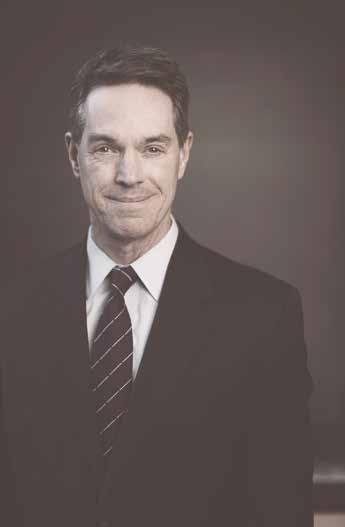



















































































And then, for the Eucharist to achieve its desired effect, we must learn to abandon ourselves to this Presence and allow the Lord to fully transform us into the model of the Image in which we were created. In his Apostolic Exhortation, Sacramentum Caritatis (Sacrament of Charity), Pope Benedict XVI pointed out



both the way we must travel and the final destination of our encounter with Christ in the Eucharist.
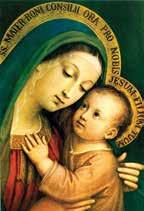

“This is … the way in which the truth of God’s love in Christ encounters us, attracts us, and delights us, enabling us to emerge from ourselves and drawing us toward our true vocation, which is love.” To fulfill our vocation, we ourselves must stay with the Lord.
Let this be our prayer: We yearn for a relationship with You, Lord. We cry out from our hearts; Lord, do not leave us; remain with us, remain in us, let us remain in you, until you transform us into Love itself.
And we find our Hope in the Lord’s own response to our desire to have Him stay with us: I am with you always, to the end of the age (Mt. 28:20).

EUCHARISTIC REVIVAL / APRIL 2023 Dedicated Catholic Women Celebrating 100 years Congratulations to the Dayton Catholic Women’s Clu Celebrating their Centennial Jubilee April 22,2023 Interested in learning more about the DCWC and our 100 Years of Giving the Best We Have? Visit day toncatholic womensclub org
The Secret of Life is Suffering
In English, the word “suffer” has at least two different but related meanings, both of which are important for contemplating how suffering affects our spiritual and moral development. In the first, suffering imposes itself upon us, against our will or consent. In the second sense, we consent to suffering as an act of will. In the former, our moral development indicates how well we endure; in the latter, our relative moral maturity indicates how willingly we consent. Broadly speaking, as the result of unexpected, contingent events, the two varieties of suffering are similar. But they differ in the relative role volition plays in the person who suffers.
In the first, more obvious meaning, to suffer is to incur some misfortune or misadventure against our will and outside of our control. Jeffrey suffers a broken arm from a fall. Beth suffers a disease from exposure to a virus. Bill suffers a chronic condition from a genetic inheritance. Wanda suffers a heart attack. Similarly, a person might suffer a false accusation that harms her reputation or freedom. The suffering may be manifest in the form of restraint, financial penalty, or public calumny. In all these cases, the suffering is physiological, medical or psychological, and it has nothing to do with the exercise of our will. In fact, it is against our will. This is suffering that is imposed upon us.
The second, less common use of the term suffering is related to our voluntary acceptance of some inconvenience or burden. To suffer in this way is to willingly assume some burden or hardship, which includes permitting someone to come into
our company. Suffering in this sense is a close synonym to “allow.” Thus, we might assume the debt of a friend or relative or permit a stranger to stay in our house or otherwise use our property. The most challenging suffering in this manner is making the moral decision to endure those who suffer in the first sense. Through expenditure of emotional energy, material wealth or spiritual discipline we assume or share the hardship, misfortune, or pain of another, which may assist us in developing the virtues that contribute to a rich moral life, difficult as it may be.
An important corollary to this second meaning of suffering is a situation when we feel a moral obligation to suffer the suffering of another, but do not have the moral courage to assume the obligation. Because we have the freedom to respond or not to the call, our choice is intact— we can indeed resist and experience a moral failure. We ought to comfort a sick relative, for example, but we fail or refuse. In the same way that suffering with others contributes to the virtuous life, refusing to do so might inhibit our moral maturity.
Contemplated together, all these considerations of suffering have profound moral implications. Suffering will have an effect on our moral or spiritual development. The only question is whether that suffering will be beneficial or destructive.
In the winter of 1897, as he neared the completion of a twoyear prison term, Oscar Wilde wrote a book-length letter

10 |
A CLOSER
LOOK
In the same way that suffering with others contributes to the virtuous life , refusing to do so might inhibit our moral maturity .
THE CATHOLIC TELEGRAPH
Oscar Wilde, 1882.
that became known by the title “De Profundis,” or “from the depths.” Written from the depths of his own suffering, the book is, in part, a sustained meditation on the moral implications of suffering. Even though Wilde knew as he wrote the letter that he would soon be released from prison, he also knew that for the rest of his life he would suffer from the scandal that led to his imprisonment. His reputation could never be restored, and his perpetual financial ruin was established by lawsuits that claimed any profits from future work. Thus, suffering had become “one very long moment,” Wilde conceded. “We cannot divide it by seasons. We can only record its moods, and chronicle their return.” Quoting Wordsworth, Wilde concluded that his suffering “is permanent, obscure, and dark/And has the nature of infinity.”
But while Wilde recognized that his sufferings would be endless, “I could not bear them to be without meaning,” he wrote. “Now I find … that nothing in the whole world is meaningless, and suffering least of all.” Suffering “is really a revelation,” he contended. “One discerns things one never discerned before. One approaches the whole of history from a different standpoint.” What Wilde had seen dimly through art “is intellectually and emotionally realized with perfect clearness of vision and absolute intensity of apprehension” through suffering.
Both forms of suffering noted above gave Wilde this clearness of vision. In the first instance, he suffered public ridicule, imprisonment and penury from an unjust conviction. In the second instance, he experienced the joining of his suffering by one particular person—an unnamed woman who visited him in prison and gave him financial, emotional and moral sustenance. She helped him “to bear the burden” of his troubles “more than anyone else in the whole world … and all through the mere fact of her existence.”
And what lesson did Wilde learn with such certitude and clarity? “There is only one thing for me now, absolute humility,” he explained. “That something hidden away in my nature, like a treasure in a field, is humility.” And it was his suffering that found it out. “To humility there is nothing that is impossible,” Wilde concluded, “and to love all things [is] easy.” This humility led to Wilde’s full reception into the Catholic Church just before his untimely death in 1900. For Wilde, suffering was the teacher, humility was the lesson and salvation was the result. May it be the same for us all.
Since 1890


Flower Plants Pansies

Vegetable Plants Herbs


Rose Bushes
Flowering Shrubs
All grown on location
| 11
A CLOSER LOOK / APRIL 2023
DR. KENNETH CRAYCRAFT is an attorney and the James J. Gardner Family Chair of Moral Theology at Mount St. Mary’s Seminary & School of Theology.
4944 Gray Road Cincinnati, OH 45232 (513) 541-0672 513-769-0511 | THEGLENSL.COM | POST-ACUTE HEALTHCARE SERVICES ASSISTED LIVING | AND MORE
ajrahn.com
The Power of Suffering
I’ve got cancer. I lost my job. My husband asked for a divorce. I can’t pay my rent.

Everybody is going through something. So, the question is not: “Do you suffer?” The question is: “What do you do with your suffering?”
Pope St. John Paul II was known to visit a local hospital near Vatican City and remind the patients to not waste their suffering. But what does that mean? How do we put our suffering to good use?
Here are three things to keep in mind to make sure your suffering doesn’t go to waste.
1) YOU CAN CHOOSE TO SEPARATE PAIN AND SUFFERING.
One way to control your suffering is to separate it from your pain. Pain is a feeling, an emotional, physical or intellectual hurt. Pain is something you often can’t control; but if you think of suffering differently from pain, you possess power over it.
Suffering in the eternal sense is being separated from God. So, placing your pain and suffering into this context gives you some control over it—you may not be able to stop feeling pain, but you can make sure that pain doesn’t take you away from God.
2) USE YOUR SUFFERING TO GROW IN HOLINESS. Bad things happen to everyone, and they are often outside of our control. How we respond to those things is our choice, and every choice either leads you closer to or further from God.
You can’t control your suffering in the sense that you can make it magically disappear, but you can use it to grow closer to Jesus. In this way there is a holiness to it, and we only need to look at the saints’ examples to see that holiness and suffering are often tied together.
Now, you might think, “Fine, but I’m no saint.” Fair enough, but there is a consolation that comes from knowing the pain we experience doesn’t have to consume us, if we don’t let it.
3) EMBRACE THE POWER.
When Jesus used suffering and death—the punishment for our separation from God—to redeem us from our sins and give us the gift of salvation, He transformed suffering from a punishment into an incredibly powerful force for good.
Your suffering has the power to save. It’s a redemptive power; hence, redemptive suffering. Offered for the intentions of those you love, it can accomplish a great spiritual victory. Don’t let yourself be a victim of suffering, rather, make of yourself a superhero of suffering, a saint of suffering.
While suffering is not good, you can still use it for good. That might be a hard thing to do—we’d prefer to not suffer at all—but “We know that all things work for good for those who love God” (Rom. 8:28). And there is a certain freedom in knowing that, even though you are suffering, God is still at work.
DOMINICK ALBANO
is The Catholic Telegraph’s director of digital engagement, an author and national speaker. He and his wife have been married for 15 years and have four sons. dalbano@catholicaoc.org

12 | THE CATHOLIC TELEGRAPH
SHINE ON
“Brothers and sisters, we do not want you to be uninformed about those who sleep in death, so that you do not grieve like the rest of mankind, who have no hope. For we believe that Jesus died and rose again, and so we believe that God will bring with Jesus those who have fallen asleep in him.”


– 1 Thessalonians 4:13-14
 { gate of heaven }
{ gate of heaven }
Joy in the
World to Come
BY KARY ELLEN BERGER
Families of those who recently lost a loved one, including through miscarriage or stillborn children, can find reassurance at Gate of Heaven Cemetery.
“The ministry of all Catholic cemeteries consists of both the corporal work of mercy of burying the dead and the spiritual work of mercy of consoling those who mourn,” said Thomas Jordan, the Director of Cemeteries for Gate of Heaven and Calvary Cemeteries, Archdiocese of Cincinnati. “The opportunity to minister to those who suffer from grief, and even despair, presents itself very often at the cemetery. As an extension of the Church, Gate of Heaven Cemetery is positioned to console and comfort the individuals whom we serve and to remind them of the hope that only comes through Jesus.”
Programs at Gate of Heaven Cemetery include a Month’s Mind Mass, Memorial Day Mass and Mass specifically for miscarried and stillborn children.
“The Mind Mass is a time for people going through the grieving process to come together with others going through the same,” said Father Patrick Crone, who has been involved with the month’s Mind Mass for several years and is also part of the Clergy

Program for committal services. “We reinforce that no one goes through the grieving process the same and the people around them are there for support more than advice. Grieving a loved one is not something we get over. We, in time, are able to deal with it better. We never want to forget a person we love.”
“Gate of Heaven has had this monthly remembrance Mass, the Month’s Mind Mass, ongoing for over 20 years,” said Kate Thesing, the Community Outreach Coordinator at Gate of Heaven Cemetery. “Most of the families and individuals do not remember much from the family parish Mass which usually takes place within the week of their loved one’s death. The month’s Mind Mass usually takes place within 30 days of their loved ones passing. They are still grieving; but that time gives them time to process and be more engaged in the Mass.”
Committal Service for the stillborn and miscarried is a comfort to families and a blessing in his own ministry.
“As a deacon, I get to participate in many ministries and Sacraments,” he said. “Presiding at committal services for a miscarried or stillborn child has been a truly humbling and moving experience for me. Humbling because it takes me away from my own needs and reminds me of the many couples who are suffering and hurting in a way that I can only imagine … . I have such empathy for them, their family and friends that I am reminded of the great need for compassion, the active desire to relieve their suffering. These are typically among the most difficult and emotionally challenging ministries for me to be a part of, but I truly believe that due to the promises of our faith, we are given the graces needed to support and walk with those in need.”
He added, “The entire service, materials, resting place and presiding ministers are covered completely by [Gate of Heaven Cemetery] and at no cost to the families. This can relieve a great deal of burden and stress for a family during this type of loss.”

“We want to be as certain as possible that an ordained minister of the Church celebrates the Committal Rite, assuring that these sacred prayers and blessings are provided to the deceased and their loved ones,” said Jordan. “It is also part of our mission to remind families of the importance of all of the Funeral Rites.”
Those interested in learning more about the services offered at Gate of Heaven Cemetery or the Chaplaincy Program can visit gateofheaven.org
To continue committal services, including those for the stillborn and miscarried children, the cemetery implemented a chaplaincy program, Jordan said. “Initially, the realization that our priests are very busy and demand for their services is high created the need to provide relief when scheduling a Committal service at Gate of Heaven,” he said. “Our program ensures that we have an ordained minister available to preside at the Committal service, should the parish priest find that [he] cannot make it to the cemetery.”
| 15
I have such empathy for them, their family and friends that I am reminded of the great need for compassion, the active desire to relieve their suffering.
REDEMPTIVE SUFFERING / APRIL 2023
Deacon Graham Galloway, one of the chaplains who assists at Gate of Heaven, shared that the
FOOD forAll
Catholic Charities of Southwest Ohio’s Drive-Thru Food Pantry Program Helps Fill Gaps Across Six Counties

 BY PATRICIA MCGEEVER
BY PATRICIA MCGEEVER
More than 374,000 people in the Archdiocese of Cincinnati are living in poverty, many living paycheck to paycheck or relying on Social Security, and stretching those dollars to pay for the basics: housing, utilities and food. They find extra help at Catholic Charities Food for All drive-thru pantries, which are open one day a month in Adams, Brown, Clinton, Clermont, Highland and Hamilton counties from 11 a.m. to 1 p.m. With one in Cincinnati’s West End, the rest are in rural areas where access to wholesome and healthy food is limited.
At a recent pantry day in Brown County, 193 families were served in two hours, but higher food costs have slashed the amount distributed.
“I used to be able to get all the families about 25 different items,” said April Hoak, Coordinator for the Food for All program. “I haven’t changed my budget. [Now] I can only get about 12 items—half of what I used to be able to [provide].”
Hoak places an order at the Freestore Foodbank, which delivers the food early in the morning. Rudy Grudier is one of the volunteers who sorts, bags and carries the groceries to individual cars. He works with the Highland County pantry located at Greater Life Assembly Church.
“Where we used to live, I [worked at a couple] food pantries, and I told my wife when we moved, the only thing I’m going to miss is the food pantries, because I enjoyed it,” said Grudier. Because he relies on Social Security, he also qualifies for assistance.
16 | THE CATHOLIC TELEGRAPH
He directs traffic to ensure the more than 100 cars arrive and leave smoothly, which has enabled him to get to know many of their visitors. “I’ve had a few say ‘I’ve been sick’ if I haven’t seen them for a while,” said Grudier. “I usually ask them if they want someone to pray for them. If they do, I’ll pray for them before they leave.”
In addition to the blessing and bag of food, he sometimes hands out one and half inch medals portraying a cross surrounded by flames. “Looks like something a biker would have,” said Grudier, a self-proclaimed biker. He’s handed out over 2,000 medals in the last several years, many to “those coming through the food line.” When giving them to someone, he simply says, “I’d like to bless you today.”
Food options change every month, but families can expect to take home fresh produce, by far the most desired item; a protein, either meat, beans, nuts or peanut butter; canned goods and cereals. They also receive personal care items provided by Procter and Gamble. Sometimes the food runs out, although it doesn’t happen often, and Hoak then knows to order more for the next month.
“I’ve been collecting the data since 2016 ... and I estimate a 10% increase [in need],” said Hoak. “There are going to be
changes happening with SNAP benefits decreasing.” She knows she’ll need more food, as she knew when Covid began.
Before distributing food each month, volunteers gather in a circle and reconnect with each other, building on their fellowship, then pray for the work they’re about to do and the people they’re about to serve. Anyone is welcome to join, said Hoak. There is always room in her circle for more volunteers.
With more than 374,000 people living in poverty in the Archdiocese of Cincinnati, Catholic Charities Southwestern Ohio tackles food insecurity head-on by offering mobile food pantries. Catholic Charities staff and volunteers distribute food to struggling families in rural Adams, Brown, Clermont, Clinton, Hamilton and Highland Counties. We also provide nutritious food to lowincome students in seven inner-city Catholic and public schools. Together, let’s overcome hunger in our communities!

Interested in volunteering at one of our pantries? Call (513) 672-3720 or visit our website at www.ccswoh.org/get-involved/volunteer/.
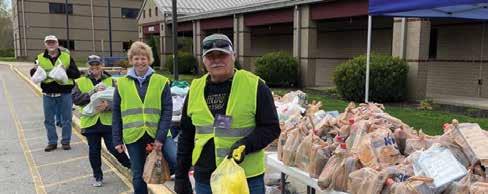
| 17 REDEMPTIVE SUFFERING / APRIL 2023 Enclosed is my gift of: £$25 £$50 £$100 £$250 £$500 £$__________ Name E-Mail Phone Address City State Zip
Please make checks payable to: Catholic Charities Southwestern Ohio, Mid Pointe Tower, 7162 Reading Rd., Ste. 600, Cincinnati, OH 45237
in
Catholic Charities’ programs?
securely online at ccswoh.org or mail in your donation.
SERVING LOCAL FAMILIES
Interested
supporting the
DONATE
Serve | Engage | Empower CT_HalfPage_March_v2 23_011.indd 1 1/27/23 9:57 AM
BY DAVID AND KRISTY KISSELL
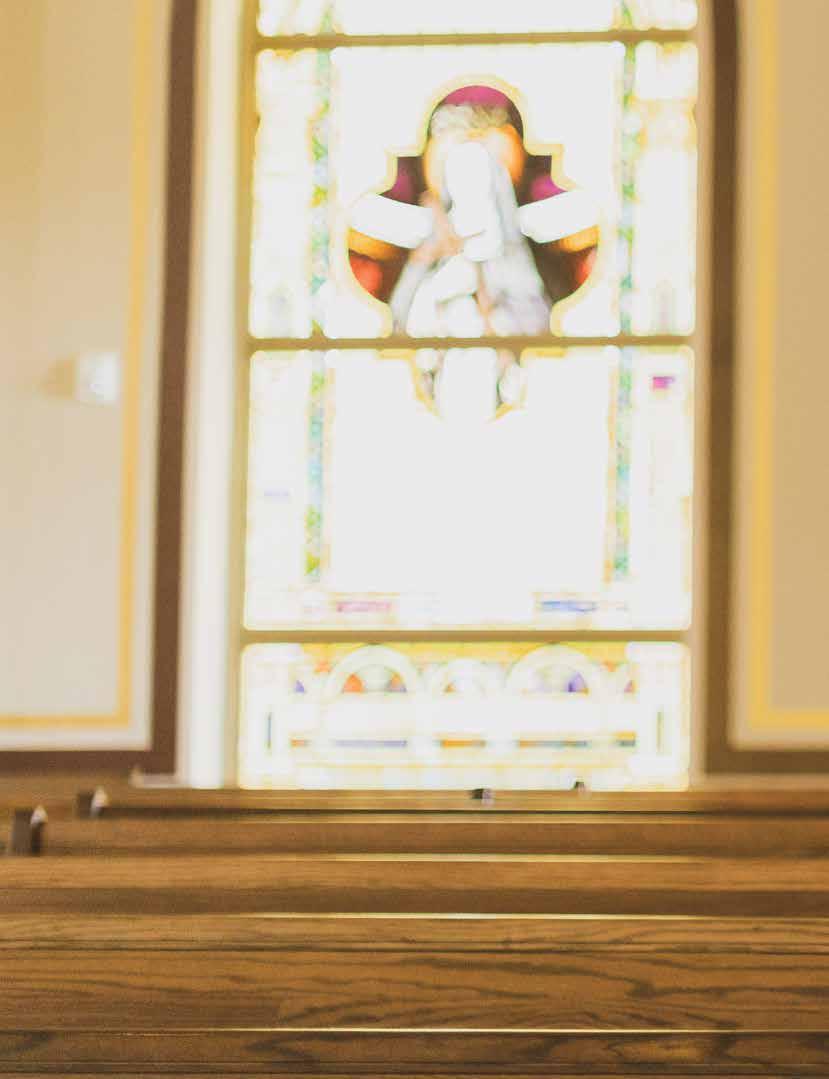
A reflection on living with Epidermolysis bullosa
It was 11 a.m. on a Saturday morning and our son, Carson, was starting to wake up. As a 15-year-old teenage boy, he slept late every now and then, but that Saturday morning was different.
Carson had been dealing with a severe eye abrasion, like a paper cut, from three days earlier. It was still so painful he had to keep his eyes closed. Entering his room, we hoped he would wake feeling better and able to open his eyes.
“How’s your eye feeling, buddy?” we asked. “Still the same, still hurts, can’t open it,” he responded with great frustration.
This was the start of day four of Carson “being in the dark.” Our hearts sank as we sat on his bed trying our best to console
Eye abrasions are just one of many physical issues that come with a condition called Epidermolysis bullosa , also known as EB. Both Carson and his younger brother, Kolbe, were born with it.
EB is characterized by extremely fragile skin and recurrent blister formations. Because the skin essentially doesn’t know how to remain attached when friction occurs, it affects all areas of the body, including internally. It has required numerous surgeries and hospital stays over the years for our boys. To be very candid, EB is a debilitating disease: Carson and Kolbe have never lived a day without feeling some type of pain. As parents, the most difficult part of living with EB is seeing
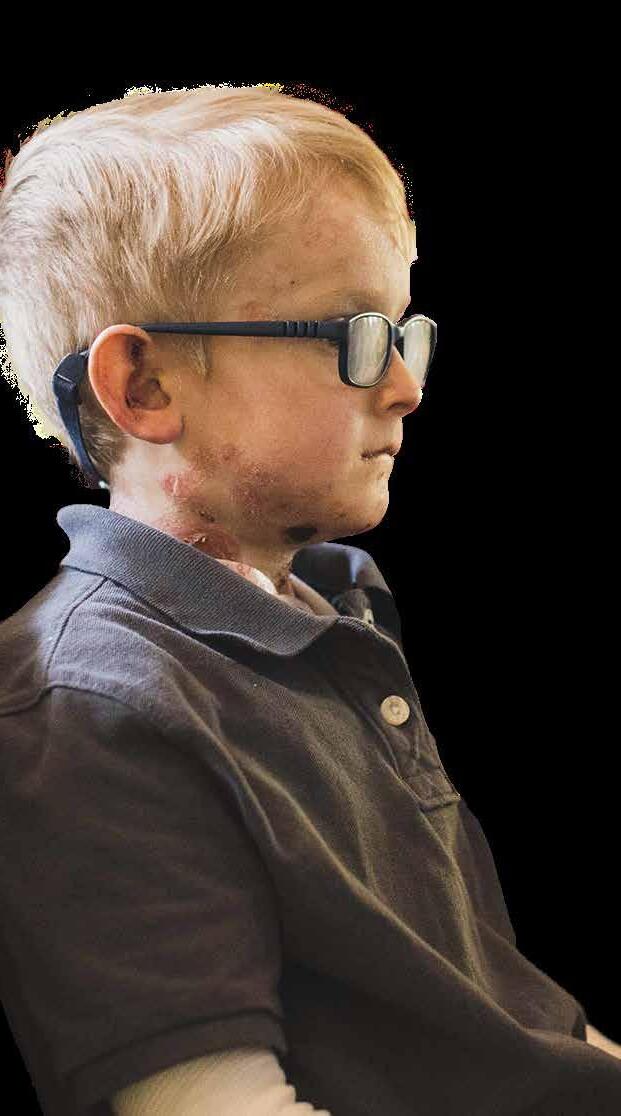
our boys suffer and realizing there is nothing we can do to take away their pain. Saturday morning was one more reminder of this reality, but it’s a cross we’ve carried for nearly 16 years.
“You have to give EB to the Lord; prayer and the Sacraments are the only way you’re going to get through this.”
Early on in Carson’s life, our pastor offered us this advice. We grew up Catholic, experienced different forms of prayer and received the Sacraments throughout our childhood and young-adult years. We didn’t, however, fully grasp how much we needed God’s grace until Carson was born.
Receiving the Sacraments of Reconciliation and Holy Communion as frequently as possible, praying together as a married couple and family, and keeping an open heart to trust in God’s healing power was the only answer to our suffering.
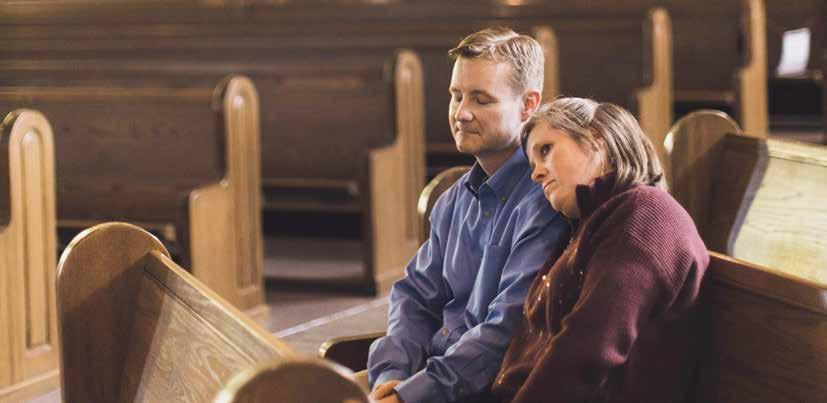

EB required us to quickly learn how to pivot between parenting and love with a gentle heart, physically and
spiritually. Carson was the gift who intensely led us to a deeper relationship with Christ and His Church, showing us the way to truly believe and live the prayer, “Jesus, I trust in you.”
REDEMPTIVE SUFFERING: Offering Up Our Days as a Prayer for Others
We often listen to the Holy Family School of Faith Rosary podcast in which Dr. Mike Scherschligt sometimes talks about suffering. His insight is one we strive to live every day:
What you did not choose, do not like, and cannot change… accept with trust and offer with love for the needs of others.
CONTINUED FROM PAGE 19






Offering up our days for others, especially the hard days, is a powerful form of prayer. When we do this, we prayerfully unite our suffering to Christ on the Cross and simply do the best we can–with whatever God permits to come our way each day. In those times of great suffering, like those “eye abrasion days,” we are closest to Christ.
Sixteen years into this journey God placed us on, we are still seeking, listening, trusting and striving to witness and persevere in our suffering, all the while giving thanks and glory to God for all He continues to do in our lives.





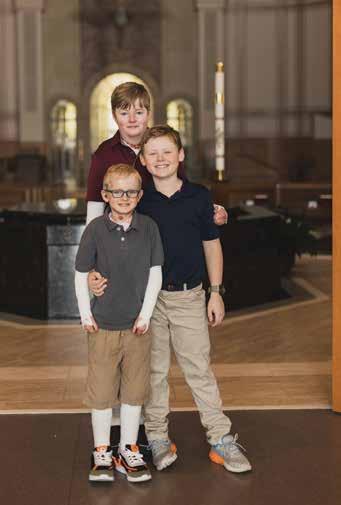
“Therefore, let those who suffer according to God’s will entrust their souls to a faithful Creator while doing good.” 1 Peter 4:19






C e get y r g den & lawn supplies f spring! Visit e of r locati s! Hamilton 173 N. Brookwood Ave West Chester 4902 Union Centre Pavilion Dr fertilizer spreader wheel barrows seeds & soil Palm Sunday, April 2 Masses at 8:30 & 11 a.m. Holy Thursday, April 6 Mass at 7 p.m. Good Friday Service, April 7 12 p.m., followed by the Stations Of The Cross Holy Saturday, April 8 Easter Vigil at 8:45 p.m. Easter Sunday, April 9
at 8:30 & 11 a.m. We invite you to join us for Holy Week and Easter. 1600 Madison Rd. • Cincinnati 513-961-1945 • info@saintfrancisds.com
Masses
THE CATHOLIC TELEGRAPH
Mary: A Model of Joy in Suffering
Whenever I think of Mary’s joy, I’m instantly reminded of the Joyful Mysteries: the Annunciation, Visitation, Birth of Jesus, Presentation in the Temple and Finding Jesus in the Temple. As I meditated on these events, however, I noticed a pattern: her joyful moments were also surrounded by suffering. This is, perhaps, an overlooked aspect of Mary’s joy, with implications for our lives.
A CLOSER LOOK
At the Annunciation, Mary received the good news that she would be the Mother of the Messiah. But there’s also the fact that she would be the Mother of the Messiah. That’s a lot to accept, to say the least. She had confusion too, since she previously promised to remain a virgin. And she faced the prospect of gossip and humiliation because Joseph had not yet taken her into his home. And yet, this is a Joyful Mystery.
At the Visitation, Mary went to be with Elizabeth and share the joy of each other’s pregnancies. But the journey into the hill country was 81 miles! She would spend three months in someone else’s home and take care of a pregnant woman when she herself was pregnant. And yet, this is a Joyful Mystery.
At the Birth of Jesus, the Savior has come! Angels were announcing, shepherds were praising, magi were searching— the whole thing was wrapped in celestial splendor. But Mary was laboring in a stall for animals. The King wanted to kill Jesus. And yet, this is a Joyful Mystery.
At the Presentation in the Temple, Simeon prophesied that Jesus would be the salvation of all people, a light to the Gentiles and the glory of Israel. But he didn’t stop there. He also said Mary’s son would be a sign that is spoken against, and a sword would pierce her heart. And yet, this is a Joyful Mystery.
Finally, at the Finding of Jesus in the Temple, Mary surely felt great joy at locating her missing son. But wasn’t this also an anxious moment? They searched for three days, working
through the traveling party and scouring Jerusalem before they found Him. If you’ve ever lost a child, you know what that’s like! And yet, this is a Joyful Mystery.
HOW CAN THIS BE?
So, what do we make of this, the fact that the Joyful Mysteries are permeated with suffering?
First of all, Mary shows us that not even perfect holiness escapes suffering. Of course, we try to escape it anyway, which is understandable. Suffering is painful—no one is particularly fond of it. Even Mary had big feelings about it. “Your father and I have been looking for you anxiously” (Lk. 2:48).
In the final analysis, it doesn’t make sense for Christians to avoid it at all cost. The path to paradise leads through suffering, through the Cross and Calvary. Since this is the path of Jesus, there can be no other way. Thankfully, God promises to eradicate suffering when He comes again and, in the meantime, to grant us the grace to bring tremendous good out of it. Mary believed this with all her heart. Do you?
A NEW REALITY
This leads to the second reason why Mary, in suffering, is a model of joy. Sources of suffering that require humility, faith or trust are not an obstacle to her—she’s filled with these virtues! Furthermore, her joy remains because it is not dependent on everything going her way. It remains because God is good, He desires her good, and He can bring good out of anything. This God is unchanging, and she trusts Him completely.
Trust in this God and, like Mary, your joy will be complete, even in suffering. This was the immutable reality of Mary’s life, and it is the hope of every Christian.
 NICHOLAS HARDESTY
NICHOLAS HARDESTY
is
the associate director of Adult Evangelization and RCIA for the Center for the New Evangelization. | nhardesty@catholicaoc.org

| 21 SEIZE THE MOMENT / APRIL 2023
SEIZE THE MOMENT

22 |
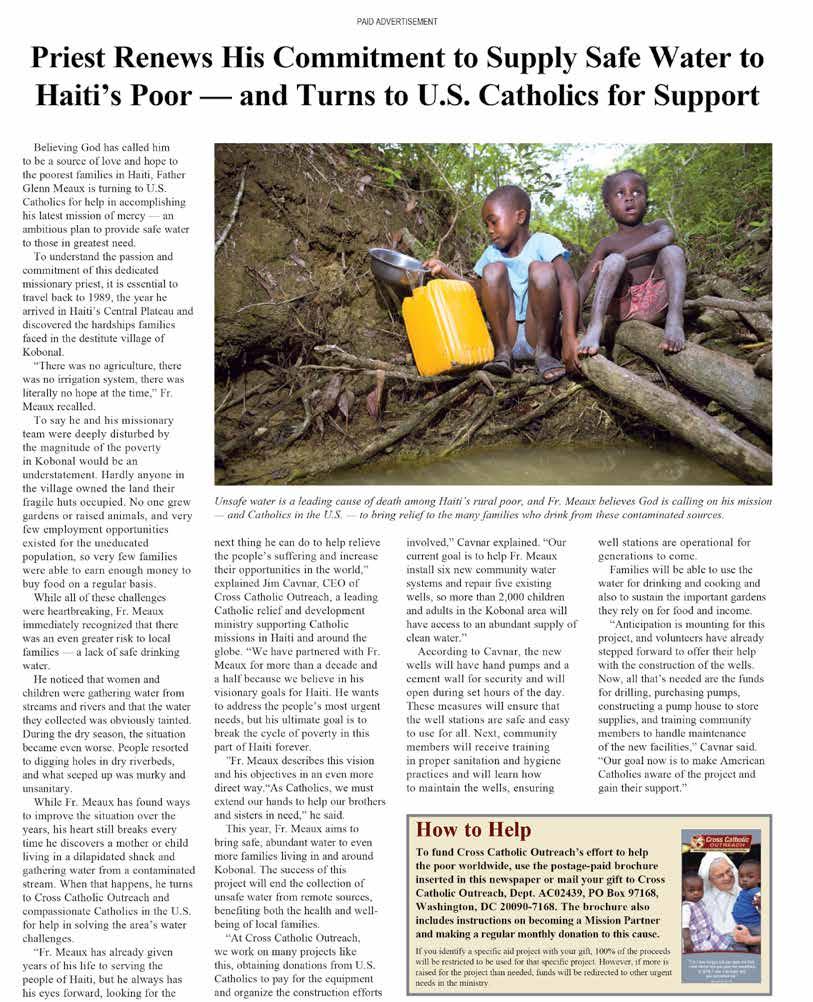
| 23
Faith & Faith &
Mental Heath
A Safe Passage through the Suffering of Mental Health
 BY DR. EMILY DOWDELL, PSY.D.
BY DR. EMILY DOWDELL, PSY.D.
People who struggle with depression and anxiety walk around casually carrying emotional wounds that if they were physical would probably require emergency surgery! Yet, they often act as if they are not injured. Somehow this feels easier than acknowledging the reality of the wound. Perhaps because deep down there is an awareness of how painful the healing process can be. However, when it comes to suffering, the amount of energy we devote to escaping or suppressing the pain actually makes it worse. When we struggle against the reality of our situation, we ultimately intensify and prolong our distress.

So, what do we do then if we’re not to minimize, suppress, or deny our suffering? Many Catholics turn to prayer with the hope and expectation that God will resolve our distress. Taking this approach, we might be tempted to think that if we are still struggling with anxiety or depression after a prayer session, we must be lacking in faith.
In an America Magazine article entitled “I thought Good Catholics didn’t need therapy. Then I went,” Simcha Fisher wrote,
“All my life, true holiness felt unattainable to me. I wanted to master my vices, to be selfless and to turn the other cheek, to fill my days with prudence, justice, temperance, fortitude, faith, hope and love. But it is hard to pursue virtue when you are quaking with anxiety, mired in depression, or paralyzed with petty rages. And by ‘hard,’ I mean it is impossible. How do you rejoice in the Lord always when you cannot stop crying? How do you forgive when you do not know how to stop replaying an insult on an endless loop? How do you die to self when you’re not completely sure who that self is? How do you thank God for God’s goodness when feeling good makes you feel guilty? How do you thirst after eternal life when the only thing that appeals to you is death?”1
Simcha Fisher might be on to something. How can we grow in holiness and move toward God if we have psychological or emotional baggage holding us back. If we think it is merely a spiritual issue, we might believe we should be able to pray our symptoms away. However, when we approach prayer as an immediate solution to suffering, we may not get the results we expect, and we might be missing the point.
In situations of prolonged suffering, call to mind the Israelites wandering in the desert, slowly working their way toward the Promised Land. After much wandering, they express their concern about the lacking bounty of food and water, wondering if they
would have been better off in Egypt. Thinking that, although they were enslaved, at least they had some semblance of security there! But the Lord does not want us to trust anyone but Him with our provision.
The Lord looks down on their lack of faith. He sends fiery serpents among the people, who bite them, and many of them die. Now that their situation worsened, the people return to Moses, expressing remorse for their complaints. They were looking to God to take the serpents away. Moses prayed for them and the Lord instructed Moses to “‘Make a fiery serpent, and set it on a pole; and everyone who is bitten, when he sees it, shall live.’ So Moses made a bronze serpent, and set it on a pole; and if a serpent bit any man, he would look at the bronze serpent and live” (Num. 21: 9-10).
In this passage, the Lord does not take the snakes away. He uses the source of pain and fear as an opportunity to challenge and deepen faith. To move through life’s difficulties, we must trust that the pain and suffering we endure is somehow, in His design, forming us. The safe passage through these dark, dangerous, and difficult landscapes is to look at the suffering and trust that He will see us through it.
But what happens when even prayer becomes a source of pain and suffering. What happens if we are anxious about our relationship with God? Or feeling overwhelmed with sadness, wondering where God was in the midst of our suffering? If we cannot bring these feelings to God and relate them to Him in prayer, we might consider psychotherapy.
A therapist, especially one versed in a Catholic view of the person, will be able to walk with you in these dark periods of life. The therapist might help you recognize the obstacles in your path and help you regain the freedom needed to pursue virtue and trust in the Lord’s divine providence.
| 25 REDEMPTIVE SUFFERING / APRIL 2023
1Fisher, S. (2017, May 18). I thought good Catholics didn’t need therapy. Then I went. America Magazine. Retrieved February
19, 2023, from https://www.americamagazine.org/faith/2017/05/18/i-thought-good-catholics-didnt-need-therapy-then-i-went
THE FINAL + Mission
How a Carthagena Community Accompanies Aging Priests & Brothers
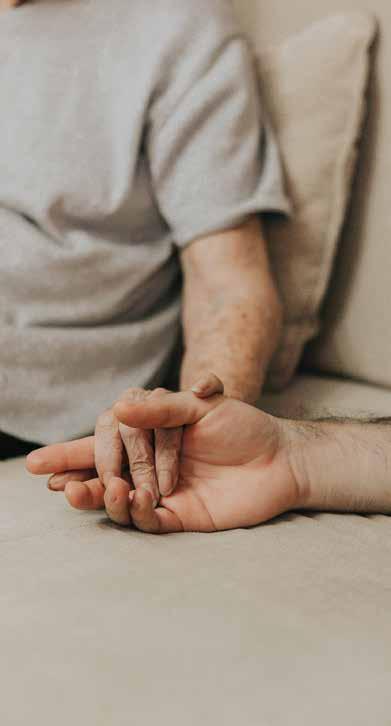 BY MATT HESS
BY MATT HESS
Over the past few months, we have seen Pope Francis continue his mission from a wheelchair, witnessing for us the strength of his commitment to his ministry of leading the Church. At the St. Charles Center in Carthagena, OH, Missionaries of the Precious Blood and their lay residents are also committed to their ministry by assisting each other in caring, growing and praying through the suffering that comes with aging.
St. Paul says, “If one part suffers, every part suffers with it; if one part is honored, every part rejoices with it” (1 Cor. 12:26). And St. Gaspar del Bufalo, founder of the Missionaries of the Precious Blood, often talked about the “bond of charity” that held the early religious community together. Today, animated by this community tradition, priests and brothers together ensure that each member is valued and cared for at St. Charles, continuing to minister in the example of Pope Francis.
The mutual accompaniment for many of these men began at St. Charles decades ago, when it was their major seminary. Many classmates are reunited, blessed to be together with the wisdom of age. The fraternity of their common past and shared time in active ministry knit a brotherhood where one does not fear to ask for assistance and another does not hesitate to offer a helping hand. Each member of the body must honor the others, for the betterment of the whole.
And patience is key in the art of assisting the aging. As each member slows down, becomes forgetful or suffers from a chronic illness, they are all called to compassion and concern for each other; which means to suffer with the other in love and charity. Sometimes it leads caregivers to reflect on their own frustrations with personal limitations, because most priests who minister to their brethren are themselves retired and recognize similar changes in their own lives.
26 | THE CATHOLIC TELEGRAPH
One member who makes it a point to reach out to residents in the infirmary said, “This is our final mission assignment and there is a real blessing and challenge in it.”
Members spent a lifetime reaching out to their parishioners or others in their pastoral care. Now, as a family cares for its own members, they are focused on ministering to each other. In his catechesis on old age, Pope Francis said: “This society that has this throwaway spirit and … rejects the elderly: it casts them aside—they are of no use—and puts them in rest homes, hospitalized.”
But at St. Charles, the elderly residents are seen as having an important ministry: to witness to the grace of suffering and death, as well as the power of prayer. Throughout our youth and middle age, we might respond to situations with action, forgetting that prayer is the most important help we can give. But here, there is no lack of priests and brothers offering their prayers each day for the needs of the Church and community. This is their ministry now, one whose power is not measurable, but has the force of a well delivered sermon, and makes members present to the Church, the Body of Christ.
Throughout the Church there are many who suffer. While the aging’s suffering may not compare to what is experienced in war-torn Ukraine or a poor South American village, our own suffering makes us more aware of what others are going through. In uniting our pain and anxiety with theirs, we also share in the suffering of Christ.
Jesus was constantly active in his ministry, feeding and healing the people. Yet his most potent act of love occurred when he could not even free His hand from the cross to comfort His afflicted mother. It was from there that He both forgave those who tortured Him and offered the comfort of paradise to the good thief. Just as Christ united members of His Church in the very worst moments, today, with our prayer, we can unite with the suffering members of His Church.
Well over two centuries ago St. Gaspar encouraged his missionaries to live in “bond of charity” the difficult gift of living, growing, praying and suffering together. He would be proud to see his community at St. Charles living this out. Furthermore, their witness fits Pope Francis’ vision, as he explained at a Wednesday audience, “Even in old age one can, or rather one must, serve the community. It is good for the elderly to cultivate the responsibility to serve, overcoming the temptation to stand aside.”
Thus, through their prayer, patience and suffering, the aging priests and brothers at St. Charles still accompany each other and, by doing so, minister to the whole Church.

| 27 REDEMPTIVE SUFFERING / APRIL 2023
three parts TO EVERY STORY
Everyone’s story has three parts: Events from our past shape our present, and the way we live our present has the power to change our future. We meet people in their present, and our interactions with them can impact their future—for better or worse. So, my mission as a client advocate at Pregnancy Center East (PCE) is this: I meet a woman in her present, she trusts me with her past, and I’m blessed with an opportunity to guide her as she builds her future.
And it all starts with a story.
BY RACHEL WEIDNER, CLIENT ADVOCATE, ADVISORY BOARD

Gianna* was 22. With three children under the age of five, her hands were full with toddlers and their disinterested fathers. Although she was avoiding pregnancy, she stared at a positive pregnancy test as her kids bickered in the kitchen, and she felt hopeless.


Rose* was married to a loving husband, and they tried to delay pregnancy until they could financially support a child, but as her husband searched for a job, they conceived a child. Rose and her husband panicked.
Eliza* was homeless and experimenting with drugs when she was raped in a violent attempt to strip away her dignity. With the first signs of morning sickness came despair—battling opioid addiction, she had no place to call home.

28 | THE CATHOLIC TELEGRAPH
When I met these three resilient women, they had one thing in common: they were unexpectedly pregnant and faced the paralyzing decision of whether to carry their baby to term. At PCE, we do not expect a woman to make this decision alone. We open our doors and our hearts to women encountering one of the most difficult and emotional decisions of their lives.
At our first meeting, Gianna explained that she had three children, but it was more complicated than that—she suspected her four-year-old, Gus*, had Autism and the childrens’ two fathers were manipulative and adversarial. Having recently left her family in the South and moved to Cincinnati, Gianna dreamed of becoming a dental assistant. Her friends convinced her there was only one option: abortion. Gianna believed the lie that motherhood came at too high a cost, that she could not be a mother of four and pursue her dreams, that this child would destroy her future. During her visits she shared her past. And from our honest conversations about her fears, she gained confidence to emphatically choose life for the baby growing in her womb.
Through PCE, Gianna received two ultrasound photos, prenatal care help from TriHealth midwives and proof of pregnancy documents for Medicaid and WIC applications. We also introduced her to Catholic Charities of Southwestern Ohio to explore their developmental services for Gus. She returned home with maternity clothes, a crib, a car seat, diapers, and clothing for her three toddlers. And Gianna felt strong. She walked in head down and hopeless, but after seeing that we could help her family materially, she walked out with chin up and emboldened.
Since then, she delivered a healthy boy, and last week shared that she could not imagine her life without John Paul*. Before ending our conversation, she said, “I’m one month away from graduating dental assistance school.”
I shared with her the pride I felt for her and all she had accomplished, ending with, “I will pray for you, Gianna. You are a hero, and you are a good mom.” While I hope to meet John Paul, the Center fulfilled its mission if Gianna never needs to return.
Rose left PCE in 2020 and had an abortion. I saw her again in 2021, with her second pregnancy, but this time, she and her husband were thrilled. However, she was hurting from the past events, so we introduced her to post-abortion counseling through which she will heal and be ready to welcome her child into a loving family.
Eliza is off the streets and clean for over a year. Carrying her baby to term with the help of a caring doctor and methadone prescription, she named him Chance because he was her second chance. He changed her future’s trajectory.
In my time at PCE, I have met nearly 100 women in their present and impacted their futures. They don’t know it, but they impacted my future, too. They taught me how to love better, listen more intently and lift the women around me. I am a better friend, sister and leader for having known these women, and one day I will be a better mother from my experiences here. To give someone the space to share her story is to give someone an opportunity to transform both her future and ours.
To learn more ways you can help women and families in your community choose life and thrive, please consider joining us for Pregnancy Center East’s 41st annual Banquet for Life on Thursday, April 20. For more information and to purchase tickets, visit SupportPCE.com
| 29
REDEMPTIVE SUFFERING / APRIL 2023
To give someone the space to share her story is to give someone an opportunity to transform both her future and ours.
Ohio’s WWII Generation

 BY JOHN STEGEMAN
BY JOHN STEGEMAN
World War II was a generational event that touched every family in the country, and for years people have shared its stories. Tipp City resident Ken Serey is the latest author to preserve this fading part of the historical record, living memory, with What’s the Story: Your Ohio Neighbors Share Their War Memories From Pearl Harbor to V-J Day.
The child of a World War II veteran, Serey has long had an interest in war stories. While working for Visual Tech Connection, which specializes in helping people with poor vision, Serey met seniors connected to the war as he traveled for work throughout Ohio. He realized their stories deserved to be written and preserved, so when he retired, he got to work.
“It was a great project for me,” Serey said. “I met so many veterans, and I always took the time to find out their stories. What did they do there? And [what they told me] just piqued my interest continually.”
While not intentionally Catholic, Ohio’s significant Catholic population means the faith is mentioned in many stories. An excerpt from one letter comes from Serey’s father, James Richard.
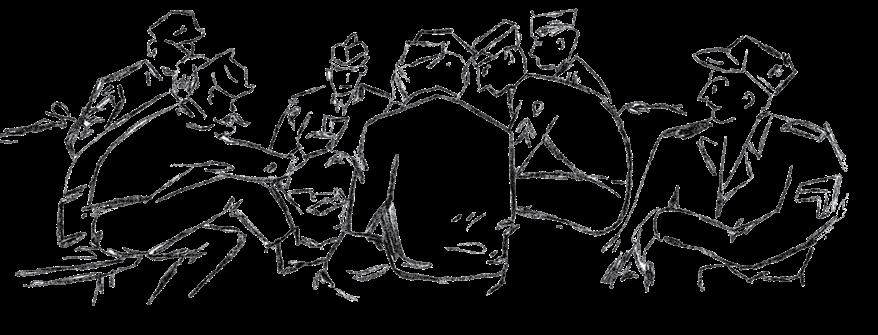
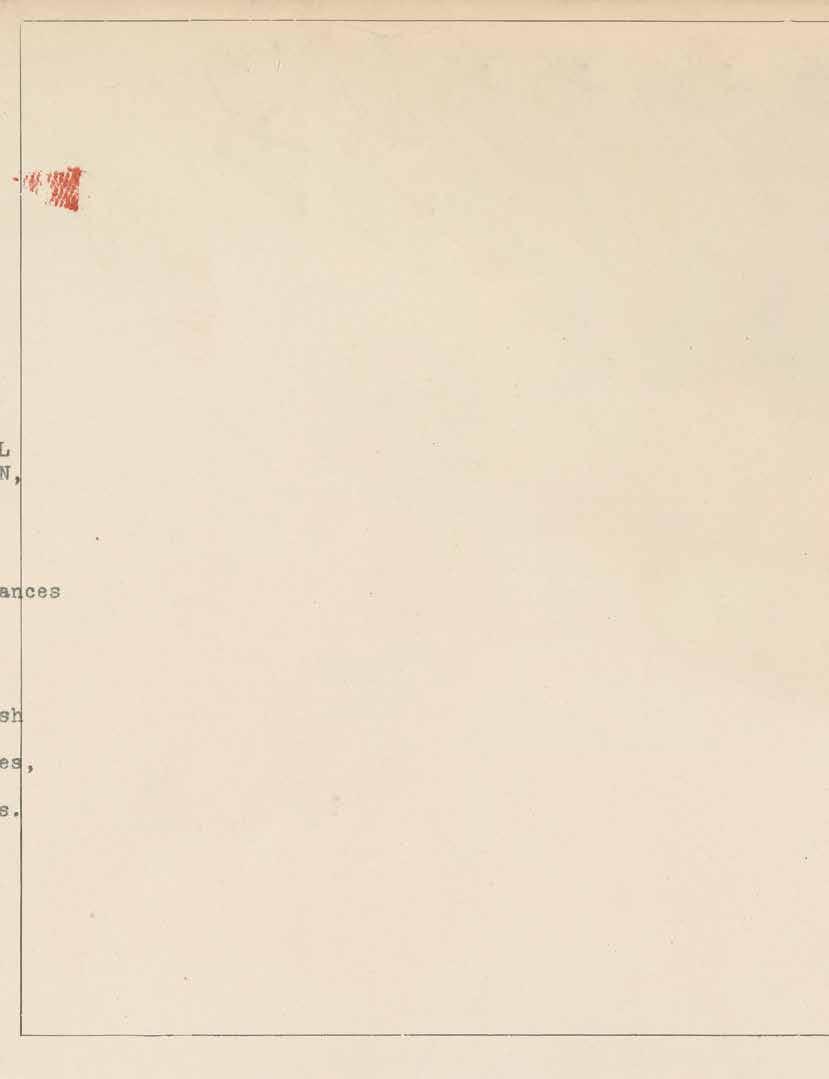
“So, try not to worry too much, will you not,” James wrote to his parents during the war. “And about my morale
statement. I have been brought up by the best parents, in the best religion, and in the best country. I am very thankful that I am Catholic, and I try to be a good one. I won’t miss one Mass, and I’ll go to communion often. I promise you that. I have everything you ever taught me about religion and how to live and think. I will keep that all closest to my heart and remember it always.”
Arranged chronologically, the roughly 50 stories take readers through the war, from the home front to the European and Pacific theaters.
Serey has also spoken around the state and found the book well-received, particularly with World War II veterans’ children who want to better understand what their parents experienced.
“I feel it’s very important to preserve these stories,” Serey said. “When I was in Catholic school at St. Helen’s back in the 60s, I was enthralled with the Civil War. [At that time, it] was a hundred years ago, but I knew it pretty well. Now, it’s sad that people don’t even know their grandfather’s story, or their great-grandfather’s story … . We should know it because we tend to repeat things, and you can see that in day-to-day life now.”
Go to kenserey.com for more information or to purchase What’s the Story.
BOOK PRESERVES STORIES OF
THE CATHOLIC TELEGRAPH









| 31 Center East ortPCE.com Fighting Hunger and Fueling Hope. Your support helps feed families in need. SVDPcincinnati.org/give KUBIK FINE BOOKS LTD 24 Park Ave., Dayton, OH 937-294-0253 | mail@kubikbooks.com One of the nation’s premiere sellers of used, rare & vintage books. Estates and collections of Catholic and other vintage books wanted! WE BUY OLD CATHOLIC BOOKS! Programs LEARN MORE Master of Science in Psychology (Online) No GRE Required Master of Science in Counseling (Online/Hybrid) Licensure Spiritual Direction Certificate A Journey of Faith UNIVER SIT Y divine m er c y www.divinemercy.edu | 703.416.8300 The IPS Doctoral Program ( Psy.D.) in Clinical Psychology is accredited by the Commision on Accreditation of the American Psychological Association (APA)* *Questions related to the program’s accredited status should be directed to the Commision on Accreditation: O ce of Program Consultation and acreditation American Psychology Associaciation 750 1st Street, NE, Washington, DC 20002 Phone: (202) 336-5979 E-mail: apaaccred@apa.org Web: www.apa.org/ed/acreditation Doctor of Psychology (Psy.D.) in Clinical Psychology APA Accredited * DIVIN E ME RCY UNIVERSITY REDEMPTIVE SUFFERING / APRIL 2023
BOOK REVIEW
With All Her Mind:
A Call to the Intellectual Life
EDITED BY RACHEL BULMAN
When I homeschooled my children, I came across proposals for curricula that indicated boys could pursue ideas (abstract thinking, maybe STEM and carpentry), while girls should only be trained up for domestic roles (the domestic arts and devotional religion). I always asked myself: Don’t women have minds too, and shouldn’t they be formed?
Rachel Bulman’s winsome collection of essays, With All Her Mind, contains contributions from women of varied intellectual disciplines and underscores women’s right and duty to be intellectually formed, which is part of being fully human.
Sister Josephine Garrett and Susanna Spencer connect the intellectual life to its foundation in silence, prayer and virtue. Sister Miriam James Heidland argues that healing is necessary before we can allow the truth to penetrate to our depths. Meg Hunter-Kilmer shows what the intellectual life looked like in the lives of two holy women: St. Edith Stein and Bl. Concepción Cabrera de Armida.
Rachel Harkins Ullman takes to task the frequently antiwoman policies of Catholic institutions by calling women in the Church to show holy boldness in living out the Christian life. Jackie Francois Angel exhorts all women, academically inclined or not, to form their intellectual life in the pursuit of feminine genius. Haley Stewart’s essay centers on how and why we should find time to read daily. Tsh Oxenreider tells the story of her reawakening to the intellectual life through writing. Stephanie Gray Connors and Leah Libresco Sargeant explore how to cultivate the life of the mind, even within the
drudgery of daily life. Amanda Achtman explores the life of the intellect in one young adult woman, while Emily Stimpson Chapman’s memoir extends it through a woman’s middle age. The darker history of women’s intellects being subordinated to men’s is not treated frequently, but Sister Theresa Aletheia Noble touches on it, as well as the mindsets (such as Enlightenment dualism) that underlie it. “The world needs who we are as women,” she writes. “It needs our emotional integration, which refines our intellectual contributions.”
More specialized topics are taken up by Elizabeth Scalia (Benedictine spirituality) and Jennifer Frey (leisure). Both authors point us away from “workism” and toward contemplation. Mary is revered “not as a domestic manager, but as a model of the contemplative life,” Frey writes. Holly Ordway discusses living the life of the mind professionally in academia, with its advantages and disadvantages. I found this essay especially resonant.
Taken as a whole, this slim volume strips away excuses for picking up a phone rather than a book, while also being sympathetic to the challenges facing a woman who is a single person, wife, mother, wage-earner, or combination of these roles. Men and women alike should peruse it, then give to women in their lives.
A mother of six, Angela Franks is a systematic theologian at St. John’s Seminary in Boston.
With All Her Mind: A Call to the Intellectual Life, edited by Rachel Bulman; Word On Fire (2022); $24.95
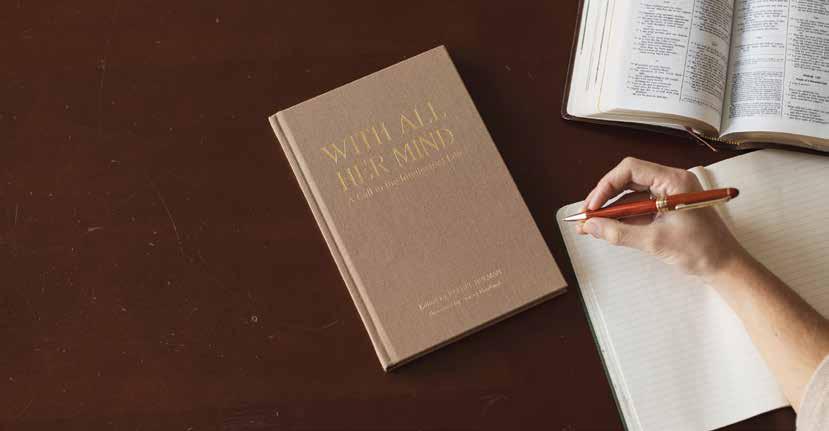
32 | THE CATHOLIC TELEGRAPH
REVIEWED BY ANGELA FRANKS
1904
Holy Name parish founded in Mt. Auburn; originally located in a large house
1906
Construction on combined church and school building begun
1950
Construction begun on current church, late modified Gothic revival style
1951
Current church consecrated
1968
Care of the parish given to the Society of the Precious Blood
1977
Holy Name School consolidates with St. George, St. Monica, Assumption, Sacred Heart, and St. Andrews (at St. George) as Corryville Catholic

1990
Care of the parish taken over by lay pastoral administrator with a part-time archdiocesan pastor

2002

Parish partners with the Franciscans; friar priests minister at Holy Name and St. Monica-St. George
2022
Holy Name joins the Uptown family of parishes (with St. Monica-St. George and Annunciation)
Holy Name (Mt. Auburn)
Holy Name Church in Mt. Auburn’s spare interior looks tranquil at first glance, but is dominated by apocalyptic imagery and Scripture passages emphasizing the awesome glory and power of God.
Holy Name
Reverence for the Holy Name of God is as old as Jewish worship, and devotion to the Holy Name of Jesus dates to the early days of the Church. Certain titles (e.g., “the Almighty”) are also used as names, and so, the term applies broadly to several names and titles of both God the Father and God the Son. The Dominicans have promoted this devotion since the late 1200’s, and the Society of the Holy Name still has thousands of members. The feast day (Jan. 3) is celebrated by Anglicans, Lutherans, Methodists and many Eastern Churches, as well as Catholics. Jesuits celebrate it as the anniversary of their order’s founding and use the monogram IHS (the Roman letters for a Greek abbreviation of Jesus’ name) as their symbol.
1 Mosaic over the high altar, erected during the Second Vatican Council, portrays Christ in Revelation and other apocalyptic Biblical passages, with eyes “blazing like fire” and a sword.“
1 Carved pediment (gable) over the recessed front door.
4 Carved wooden trusses, painted with symbols of God’s Name, and other wood beams ornament the ceiling’s single vault. A wide flat strip of molding at the vault’s base rings the top of the walls and is painted with symbols and Biblical passages about the Name of God in Gothic letters.
8 Sets of triple, round-arched stained glass windows. Each central window depicts one of the O Antiphons.
“We’re a multicultural, very small parish. Over the years we’ve developed a family atmosphere-- Everybody knows everybody by first name.” Long-time parishioner Sister Ruth Bedinghaus, SdN
| 33
DID YOU KNOW? / APRIL 2023
The Community of the Good Shepherd

8815 East Kemper Rd. Cincinnati 45249
513.489.8815
Vigil: 8:45 p.m. (Regular Saturday 4 p.m. Mass will not take place).
Sunday:
• Church: 8 a.m., 10 a.m. & 11:30 a.m.
• Community Room: 9 a.m. & 10:30 a.m.
Historic St. Rose

2501 Riverside Dr., Cincinnati
513.871.1162
Easter Vigil 8:45 pm
EASTER MASSES
in the Archdiocese
St. Columban
894 Oakland Rd, Loveland
513.683.0105
Vigil: 8:45 p.m.
Sunday: 8 a.m., 9:45 a.m. & 11:30 a.m.
Family of the Most Holy Eucharist
Vigil: St. Martin of Tours 8:45 p.m.
Sunday:
• Our Lady of Lourdes : 9 a.m. & 11a.m.
• St. Aloysius Gonzaga: 8 a.m. & 10 a.m.
• St. Antoninus:
& 11:30 a.m.
• St. Catharine of Siena: 9 a.m. & 11 a.m.
• St. Martin of Tours: 8:30 a.m. & 10:30 a.m.
Holy Family Latin Mass Dayton
daytonlatinmass.org
Holy Thursday 7 p.m.
Good Friday 3 p.m.
Easter Vigil 10:30 p.m.
Easter Sunday
• 8 a.m. (low)
• 10:30 a.m. (high)
Family of the Blessed Trinity
Vigil: St. John Neumann 8:45 p.m.
Sunday:
Easter Sunday 7:30 a.m., 9 a.m., 10:30 a.m., 12 noon Happy Easter!
• St. John the Baptist, Dry Ridge: 8:30 a.m. & 11 a.m.
• St. John Neumann: 8:45 a.m.
• Corpus Christi: 10:45 a.m.
34 |
9:30 a.m.







| 35 EASTER / APRIL 2023 We have a solution! Housing Apprenticeships & Life Coaching Send your tax-deductible gift today to: Disciples of Destiny 4730 Sheller Ave., Dayton, OH 45432 (937) 475-9685 DaleNieberding@gmail.com Join us at our April 28 banquet! They ’ re Just Kids... Abandoned. Homeless. Orphans. www.abbeycaskets.com | 800.987.7380 | info@abbeycaskets.com 200 Hill Drive, St. Meinrad, IN 47577 | Connect with us on | By purchasing from Abbey Caskets, you are not only planning for your future, you are supporting the life of the Church and the people of God. Learn more at www.abbeycaskets.com. Contact us to plan for your Abbey Casket and receive a 10% discount when you prepay now through April 28, 2023. Connect with the spirituality of Saint Meinrad
A Work of Saint Meinrad Archabbey
II’S THEOLOGY OF THE BODY
Original Shame Part 3
Note: This article is part of an ongoing series on Pope St. John Paul II’s “Theology of the Body” (TOB).
With their fall from grace, our first parents experienced a decisive shift in their relationship, marked by what I have been referring to as original shame. In my last article, I discussed how this experience emerged because of the new state of internal and interpersonal disharmony in which the man and woman found themselves. Original sin caused a weakening of “control of the soul’s spiritual faculties over the body” and brought about “tensions” between man and woman, “their relations henceforth marked by lust and domination” (CCC, 400). Catholic tradition refers to this inner state of disorder that leads to lust and domination, which we all inherit, as concupiscence.
Because of this new situation the man and woman found themselves in, they experienced a new urge to cover the signs of their sexuality, which John Paul II referred to as “reciprocal shame” (TOB 28.1). Being a result of sin, it is not hard to see this new experience of shame as a bad thing. Clearly, it’s not supposed to be this way. We were made for communion, not hiding. However, God never abandons man and always seeks with His infinite power, wisdom and love to draw good out of evil. In this light, even our experience of shame can be used to guide us back to a deeper appreciation of the dignity of the human body. Let us examine how.
In contemporary psychology, shame is typically seen as toxic for the human person. This is because psychologists tend to equate shame with the experience of seeing oneself as bad, defective or unworthy. If I see myself in this way, I will dread selfdisclosure because I anticipate that I will be harshly treated and rejected by others. In the face of such a situation, mental health professionals—myself and my colleagues included—work to increase self-acceptance and awareness of one’s goodness.
While this contemporary approach to shame is valuable, it differs significantly from Pope St. John Paul II’s use of the term
in TOB and his prior work Love and Responsibility (LR). When he spoke of shame, especially the reciprocal shame experienced by man and woman, he had in mind the urge to hide the sexual features of our bodies from one another. This flows from our experience of concupiscence. Shame moves us instinctively to shield from the eyes of the other those aspects of our bodies most connected with sexuality because we perceive that others may look upon our bodies not as the sacrament of the person, but as mere objects to be used. Thus, shame, in this sense, is a reaction to the possibility of being used.
In TOB and Love and Responsibility, the saintly pope wrote extensively about how the dignity of the human person requires that we never treat another human being as merely an object of use. Rather, the only proper response to another person is love. He applied this “personalistic norm” especially to the relations between man and woman in which the sexual appeal of the body—in the presence of concupiscence—can become a source of temptation to use the other for our own selfish purposes. Shame moves us to prevent this use by “concealing the sexual values in order to protect the value of the person” (LR, p. 165, emphasis added). In this sense, shame is very closely related to, and a building block of, the virtue of modesty.
This has nothing to do with a prudish view of the body or sex as inherently bad or evil. Rather, as Pope St. John Paul II repeatedly affirmed, sexual shame can actually help reawaken in us an appreciation for how good and even sacred our sexuality is. He wrote that through shame, man and woman “become conscious of the spousal meaning of the body” and are moved “to protect it” (TOB 31.1). In protecting the spousal meaning of the body, we implicitly say to ourselves and others, “Behold, it is very good” (Gen 1:31).

DR. ANDREW SODERGREN, MTS, PSY.D. is a Catholic psychologist and director of psychological services for Ruah Woods. He speaks on the integration of psychology and the Catholic faith. He and his wife, Ellie, have five children.

36 | THE CATHOLIC TELEGRAPH
POPE ST. JOHN PAUL






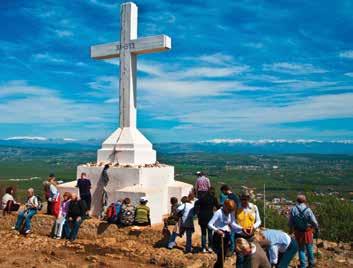

| 37 THEOLOGY OF THE BODY / APRIL 2023 If We Don’t Trap Them Now They’ll Be Twice As Bad Next Spring! Serving Cincinnati, N. Kentucky, Indiana, Dayton/Springfield & Wilmington Moles can tunnel underneath cement, collapsing patios, driveways and walkways. TIRED OF GROUND MOLES TEARING UP YOUR LAWN & FLOWER BEDS? Call Today For A Free Consultation! 513-518-5639 or visit trapyourmoles.com EXPIRES 3/31/23. Present this ad to receive discount. Not valid with any other offer or discount. 20% OFF Ground Mole Trapping Service Ursuline Academy is excited to offer a wide variety of enrichment, special interest, and athletic summer camps for girls entering grades 1 - 9. R E G I S T R A T I O N I S O P E N N O W ! u r s u l i n e a c a d e m y . o r g / s u m m e r UA Summer Camps COME HAVE SOME FUN AT UA THIS SUMMER! CONTACT LISA PIFHER (513) 377-6780 or lpifher@hotmail.com MEDJUGORJE PILGRIMAGE JUNE 12-22 2023 $2,795 from Cincinnati price includes airfare, transfer, hotel and 2 daily meals. Visit our Facebook page for more info.
Benedict was born near Arras, France, in 1748, the oldest of 15 children. His uncle, a parish priest, took Benedict under his care and oversaw his education for the priesthood. He wanted to become a Trappist monk at age 16, but his parents insisted he wait until he was older. However, when Benedict was 18, he and his uncle cared for the sick during a pandemic, and the illness killed his uncle.
Benedict tried to join several religious orders, but was ultimately rejected by all because of his frail health. Realizing his vocation lay elsewhere, he turned to God for discernment and felt called to pursue his vocation in the world. He made pilgrimages to Christian devotional sites around
Europe, traveling on foot, begging to meet his needs and often sleeping outside or in a corner.
Much of his time was spent before the Eucharist in adoration, when Benedict was said to have mystical experiences, including levitation and bilocation.
He collapsed from malnutrition and exhaustion during Holy Week in 1783, on the steps of Santa Maria ai Monti church in Rome. Carried to a house behind the church, he died.
St. Benedict Joseph Labre is the patron saint of mental illness, the homeless and unmarried men.




38 | THE CATHOLIC TELEGRAPH
St. Benedict Joseph Labre
To love God, you need three hearts in one - a heart of fire for him, a heart of flesh for your neighbor, and a heart of bronze for yourself.


beg benedict bilocation discernment health homeless levitation monk mystical pandemic trappist vocation






| 39 KIDS’ CORNER / APRIL 2023
st-benedict-craft
Craft Directions thecatholictelegraph.com/
in the Archdiocese out & about
2) Science Fair Winners at Lehman

1) Donations from Saint Ursula Academy
This year’s DRIVE (Donate, Respond, Invest, Value, Educate) at Saint Ursula Academy benefited the Society of St. Vincent de Paul. Students collected nutritious, shelfstable food, laundry detergent, and cleaning supplies for our neighbors in need.

1 2 3 4



4) DPCR Leadership Partners Honored
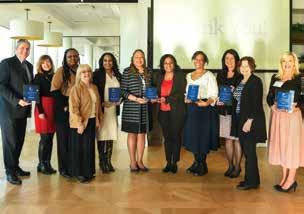
Jill P. Meyer, CEO of the Cincinnati USA Regional Chamber, shared her love and support for the school’s mission as the keynote speaker at the Corporate Partner Leadership Breakfast honoring DePaul Cristo Rey’s (DPCR) Corporate Work Study Program (CWSP) Partners. The program breakfast featured DPCR leaders and students giving their personal thanks to the 90 partner companies and organizations.
3) Royalmont Celebrates CSW!
Royalmont Academy had a wonderful Catholic Schools
Week (CSW) that included wearing uniforms to Mass at our families’ respective parishes, to Happy Hat Day and Saint Sock Day.


40 |
Lehman Catholic High School in Sidney held its annual Science Fair on Feb. 9. Forty-five Freshmen submitted projects to be exhibited and judged. Twenty-nine students received excellent ratings and 10 students received superior ratings, qualifying them to participate in the district competition. THE CATHOLIC TELEGRAPH
Catholic Crossword

ACROSS
1 “We are many parts, we are all one ___…”
5 “…your rod and your ___ comfort me.”
(Ps 23:4)
10 Discharge of a firearm
14 Continental money
15 Big name in chips
16 Bethsaida, to Philip
17 Direction (abbr.)
18 Lover
19 On the ocean
20 Approximate
22 “Notice the
patron saint
49 Pouch
50 Fate of Jerusalem at the hands of Babylon
51 Feature of Psalm
119
56 Start of a sphere?
57 Brother of Rebekah
23 Viper
25 Milk store
26 “___, Kindly Light”
27 Both (prefix)
28 Grumble
29 Rock add-on
30 “___ be to the Father…”
32 Flies high
33 Overfill
34 Maize
35 Objectionable
36 Annual race, familiarly

38 Lessens
42 City in central Texas
1 Sydney’s first archbishop, John ___ Polding

2 Gallic agreements
3 Mild oath
4 Teammate of Mickey and Moose
5 Book of the Old Testament
6 US government obligation
7 “Hey, don’t look ___!”
8 Charge
9 St. Dorothy is their patron saint
10 Remove hair
11 First of the twelve Minor Prophets
12 Auguries
13 Tantalize
21 Clublike weapon
43 “___ to you, scribes and Pharisees…” (Mt. 23:13)

44 Catholic actor of “The Honeymooners” fame
45 ___ of the firstborn (plague)
46 Beyond what is usual
47 Target
48 Horse sounds
49 Parboil
51 First name in a poem by Leigh Hunt, Romantic-era
On the cover of our March issue of The Catholic Telegraph, we incorrectly identified the location of Resurrection Church. The correct location is Bond Hill.


| 41 APRIL 2023
1 2 3 4 5 6 7 8 9 10 11 12 13 14 15 16 17 18 19 20 21 22 23 24 25 26 27 28 29 30 31 32 33 34 35 36 37 38 39 40 41 42 43 44 45 46 47 48 49 50 51 52 53 54 55 56 57 58 59 60 61 62 63 64 65 com wordgamesforcatholics www
of
convulsively
the scenery
Split
206, to Nero
Blind as ___
book on the Sacraments, ___ to the Sacred
Cut of meat
Eat
Watchful
___ Youth Day
Lean and sinewy
Catholic actor of gangster movie fame
___: they neither sow nor reap…” (Lk 12:24) 24 ___-high hand 25 Illness 26 Father
Noah 30 Breathe
31 Chew
32
33
37
38 Martos’
39
40
41
42
43
44
is
45 Stephen
their
59 Pledge 60 Snare
61 Nanette’s school
62 ___ Minor 63 Headwear
64 Investigate closely 65 Incline DOWN
poet 52 Spirit 53 Noxious weed 54 “___ Small World” 55 Chinese literary detective 58 Tread the boards B O D Y S T A F F S H O T E U R O I N T E L H O M E D I A G R O M E O A S E A E S T I M A T E R A V E N S A C E D I S E A S E L A M E C H G A S P E M O T E S L I T C C V I A B A T D O O R S L O I N D I N E W A R Y W O R L D W I R Y C A G N E Y D E A C O N S S A C E X I L E D A C R O S T I C A T M O L A B A N O A T H T R A P E C O L E U R S A H A T S S T U D Y L E A N moc sci ohtacrofsemagdrow www NOTICE
I have had to face many trials; however, my greatest suffering came from the one I brought upon myself, when I took the life of my own child.
A senior in high school with an unplanned pregnancy, I believed the lie that if I had an abortion, my parents would never know, my boyfriend would stay with me and my life would go back to normal. Scared and focused solely on making things go back to “normal,” I took the chemical abortion pills and ended the life of my seven-week-old baby. Those deadly pills starved my baby and then stopped his or her beating heart.
Weeks later, I began to hemorrhage severely while in class. Only then did I realize the pills had not fully done what they were supposed to do, and I had to watch in horror for hours as my body went through the graphic extrication of that pregnancy.
Afterward, I did what most do with their sin: I hid it. I tucked it away as far down as I could, vowing to take that abortion with me to the grave. But when a sinful human embraces the gift of salvation that can only come from the death and resurrection of Jesus Christ, it changes your entire world.
God designed the female body to create, protect and give life. At the time, I did not understand this gift. I failed to grasp how one decision would not only affect me for the rest of my life, but also those in my future.
God, rich in mercy, had a different plan for me. Jesus rescued me from myself while I was in college—He rescued me from my sin and reconciled my heart to Him when I was 21. My entire world changed, and I began reading the Bible every day. It was a difficult, emotional time in my life, but
He Rescued Me From Sin
it enabled me to blossom through the grief and pain I had to confront.
I started working for a crisis pregnancy resource center and became unapologetically pro-life. Through sharing my abortion story of regret to anyone willing to listen, I saw how God was using my sinful past to help others. I am living proof that God does not waste anything. He is a God who redeems.
Ten years later, the boyfriend I was so desperate to keep during high school, the one who was irrevocably linked to me in our awful decision to terminate my pregnancy, he returned to apologize to me. He had walked his own journey and faced God amid his own battle. Through sharing our separate journeys with each other, God brought us back together.
Eight months later, 13 years ago, I became his wife, and God granted us four beautiful children. After all this time I am still blown away by the redemptive story God gave us, even as I see and hear examples of God’s redemptive love from people I meet every day.
As Easter approaches, it is a reminder of the suffering Jesus endured to set sinners like myself free from the bondage of sin. Living a Godly life and walking every day with Jesus is not meant to be an easy road. Rather, it is meant to show us unfathomable grace and steady, endless love. It is restorative and above all, redemptive, no matter what sinful darkness we’ve walked in. An everyday walk with Jesus brings hope.
TONI MCFADDEN
is an international speaker and the author of Redeemed, My Journey after Abortion. As a counselor, she helps those considering abortion choose life and empowers healing for those who are post abortion.

42 | THE CATHOLIC TELEGRAPH
THE FINAL WORD with Toni McFadden
Death is an end, but it’s not the end.
We all have very real questions about death. What happens when we die? What does Scripture teach about death? How do we prepare for the life to come? e Augustine Institute invites you to Eternal Rest, a four-part fi lm series exploring the mystery of death and the promise of everlasting life.




Explore More Topics on EternalRest.org







| 43

44 | 100 E. 8th St. • Cincinnati, OH 45202









































 { gate of heaven }
{ gate of heaven }



 BY PATRICIA MCGEEVER
BY PATRICIA MCGEEVER





















 NICHOLAS HARDESTY
NICHOLAS HARDESTY



 BY DR. EMILY DOWDELL, PSY.D.
BY DR. EMILY DOWDELL, PSY.D.

 BY MATT HESS
BY MATT HESS






 BY JOHN STEGEMAN
BY JOHN STEGEMAN



































































